-
Best Seller

-
Best Seller

-
Best Seller

-
Best Seller

-
Best Seller

-
Best Seller

-
Best Seller

-
Best Seller

-
Best Seller

-
Best Seller

Organic Ghee
Organic Ghee
USDA Certified Organic
When you purchase certified organic herbs from Banyan Botanicals, you can be confident that you are making a healthful choice, while also contributing to a healthier planet. In order to meet the USDA’s stringent organic standards our entire line of supply is regularly inspected by independent 3rd party certifying agencies.
Learn MoreCouldn't load pickup availability
Complete the Bundle

Kitchari Kit
All the essential supplies to make tasty and nourishing kitchari for a week
Free Shipping on Orders Over $60
Satisfaction Guarantee - 90 Day Return Policy
About Organic Ghee
About Organic Ghee
Our cultured ghee is made from the finest organic clarified butter from small family farms where the cows are pasture raised, grass-fed, and given loving care. Handmade in small batches, this creamy golden ghee makes a healthy and delicious alternative to butter and oil. With a high smoke point of 485°F, it is ideal for cooking, sautéing, and baking.
- Cultured ghee from pastured, grass-fed cows
- Handmade in small batches
- Suitable for high heat
- Use like butter or oil
How To Use
How To Use
Ways to Enjoy Ghee:
- Drizzle over warm grains and veggies
- Dollop on soups, stews, and kitchari
- Add to baked goods in place of butter
- Blend into coffee for sustained energy
Ingredients
Ingredients
7.5 oz:
Serving size: 1 teaspoon
Servings per container: 43
13.4 oz:
Serving size: 1 teaspoon
Servings per container: 76
Ingredients:
Ghee, made from certified organic, unsalted, cultured butter (milk)+.
+Certified Organic
This item is suitable for vegetarians.
It is normal for the texture of this ghee to vary slightly. This does not impact the taste, quality, or shelf life.
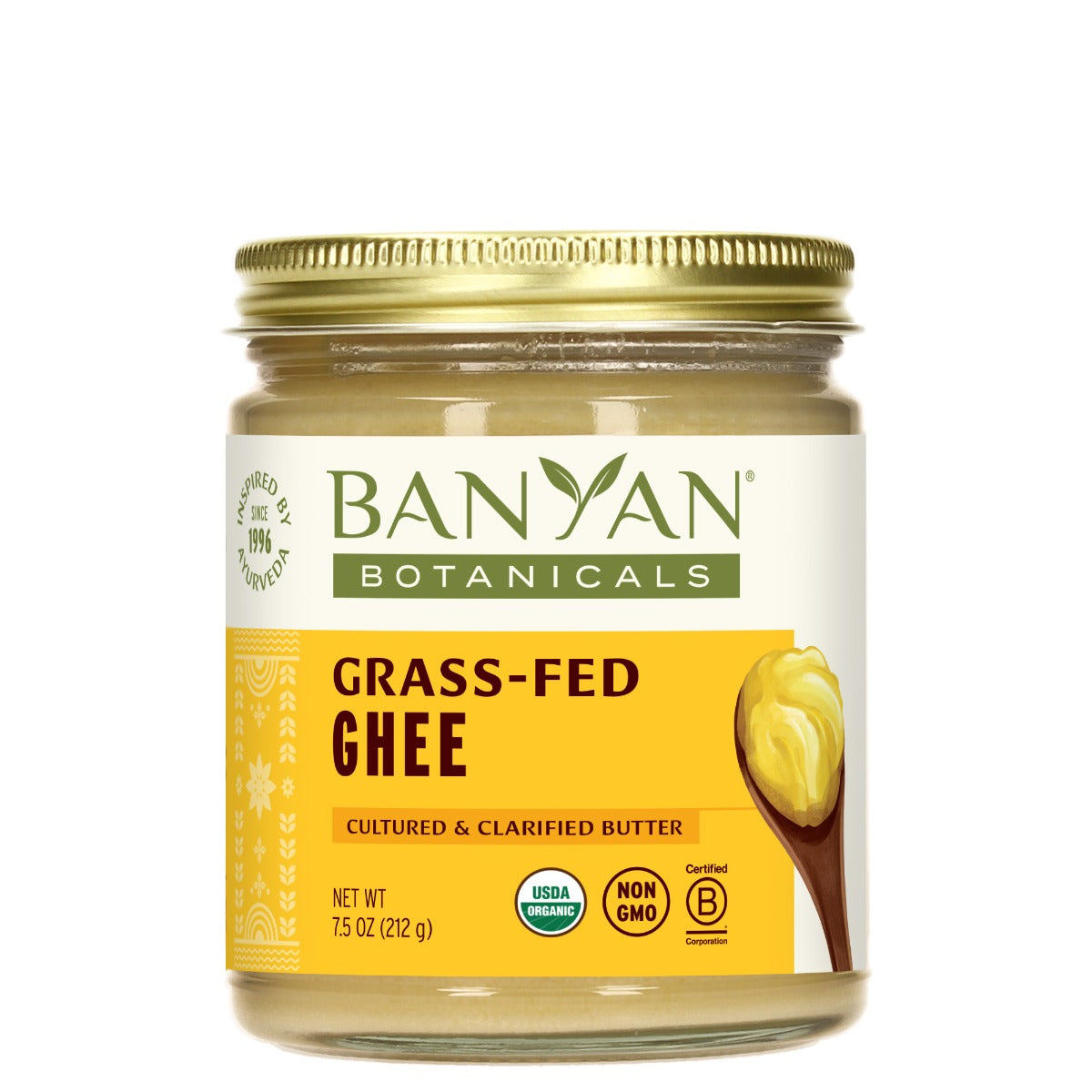
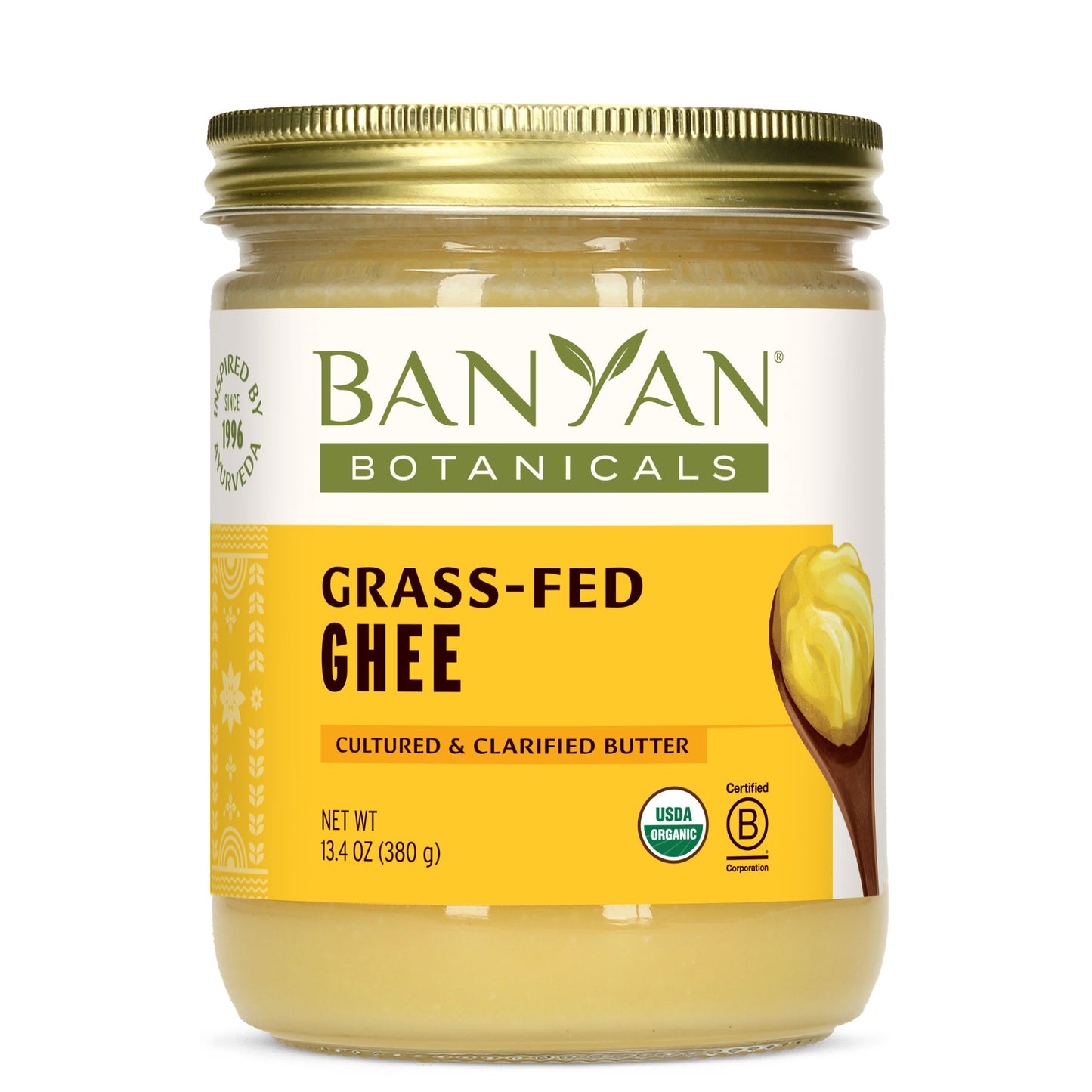
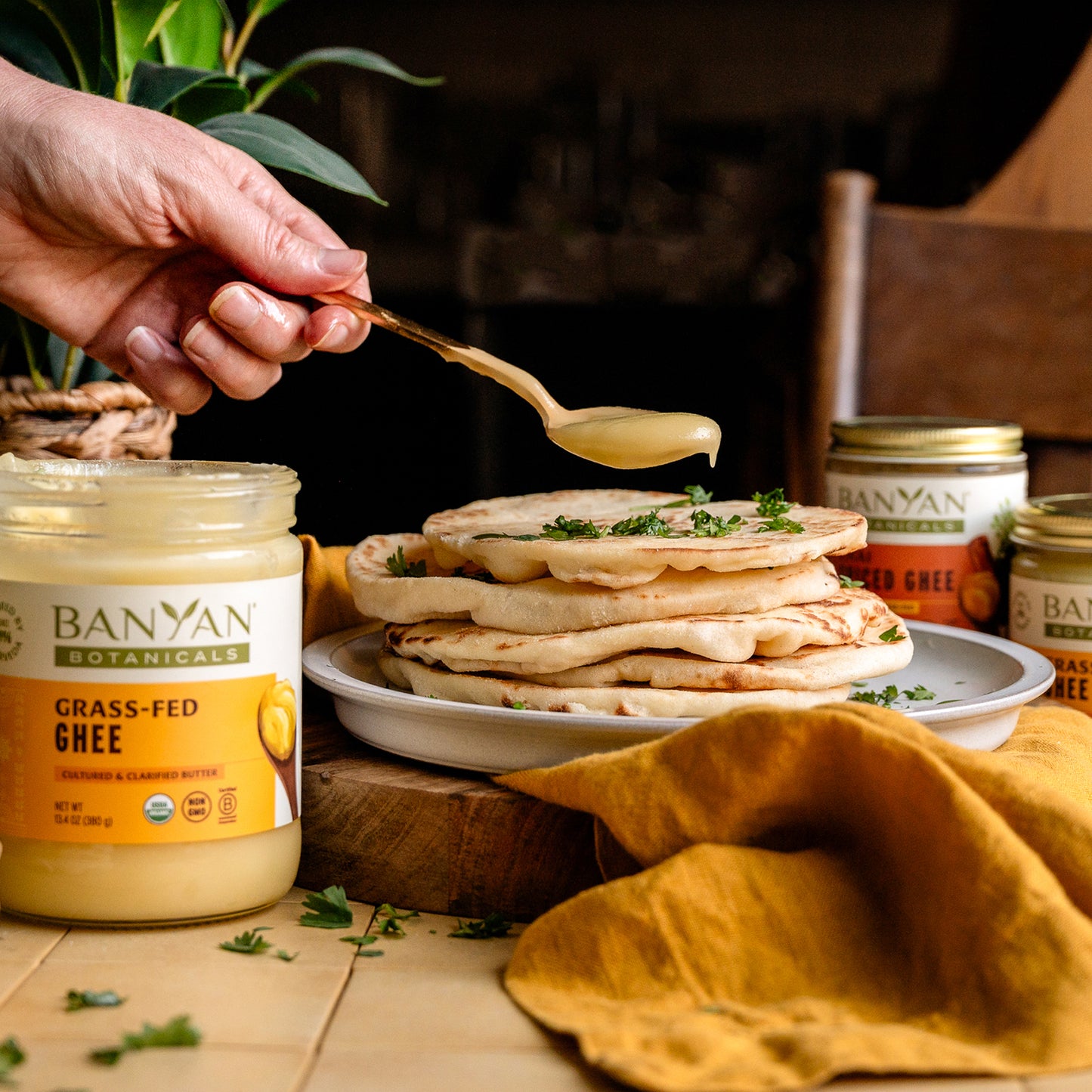
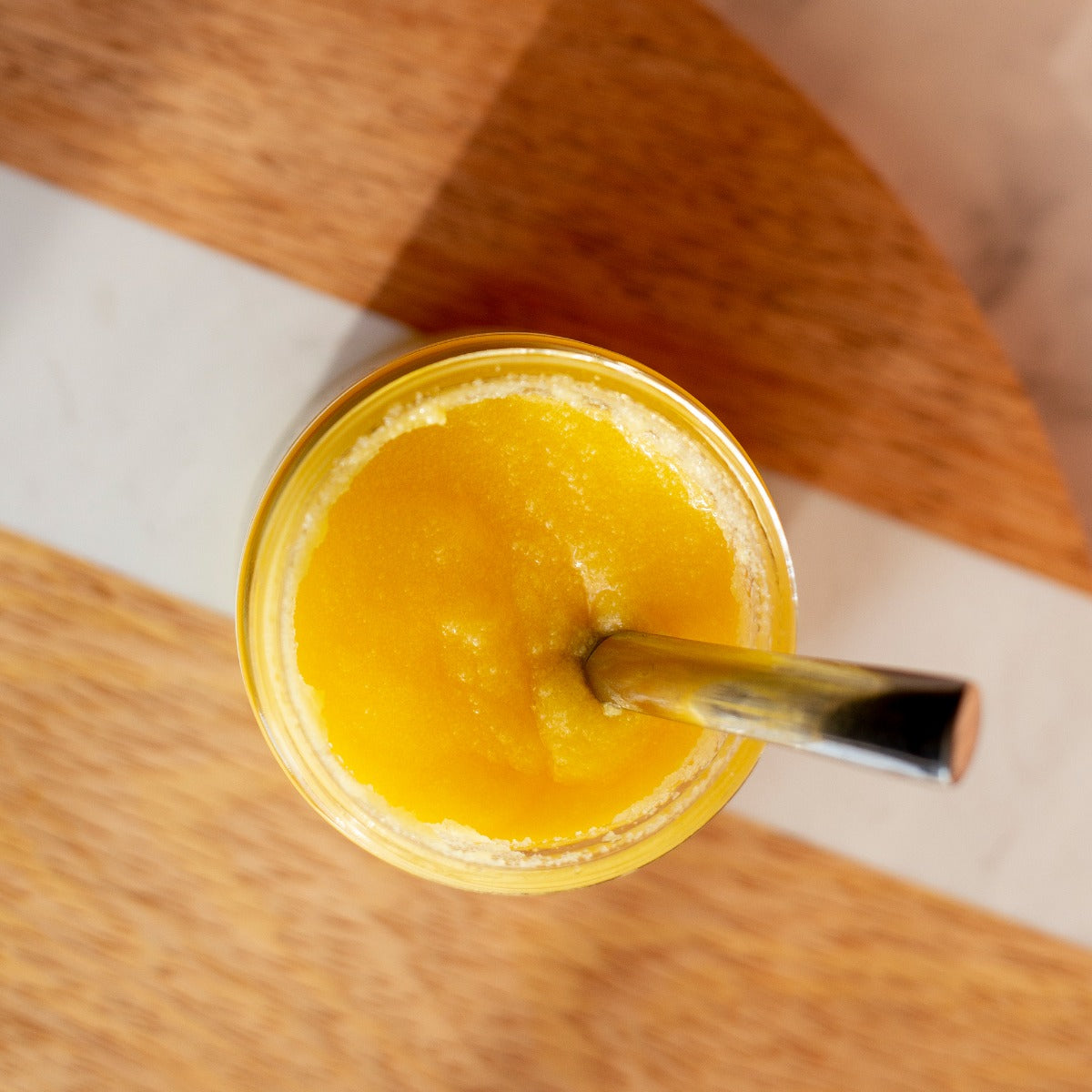
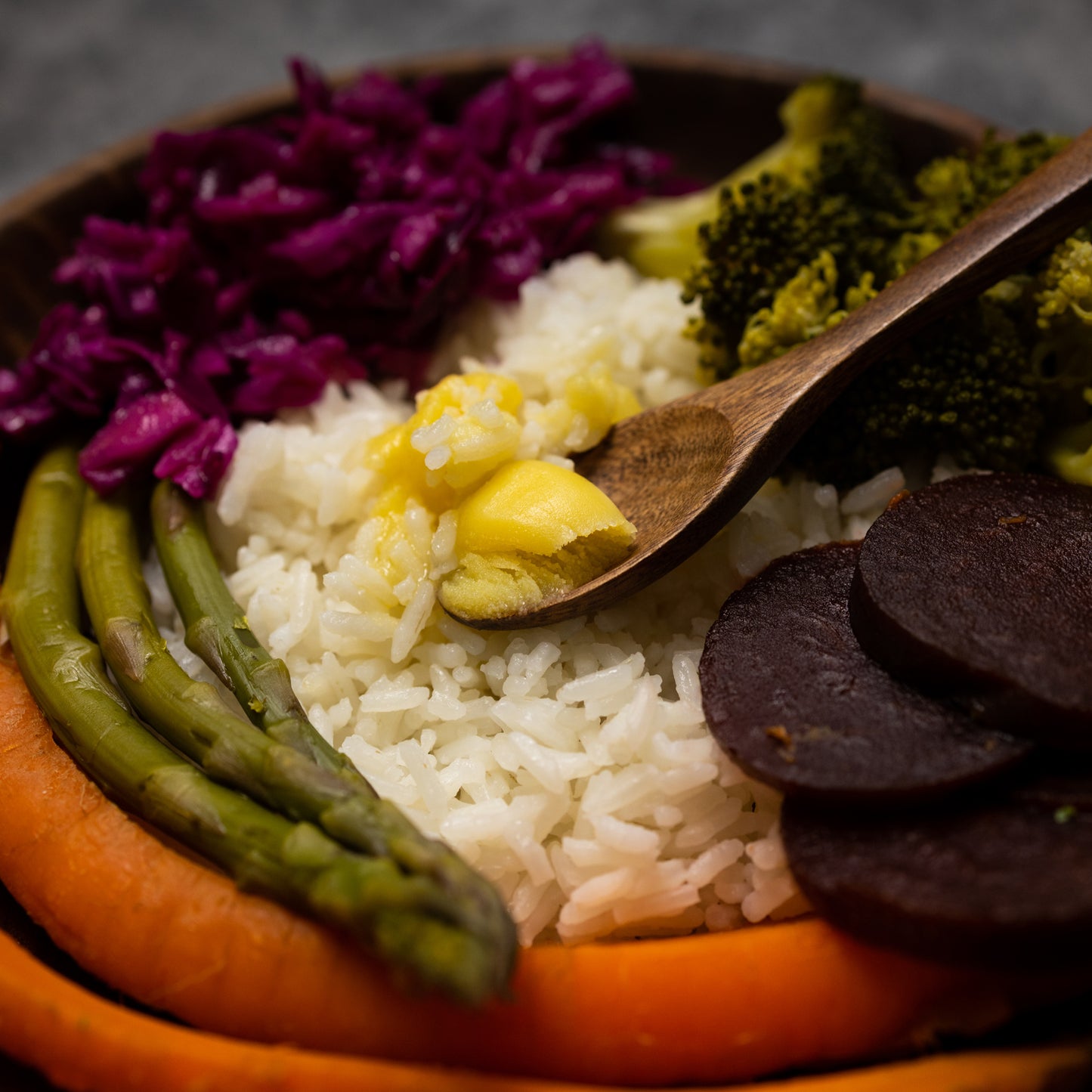
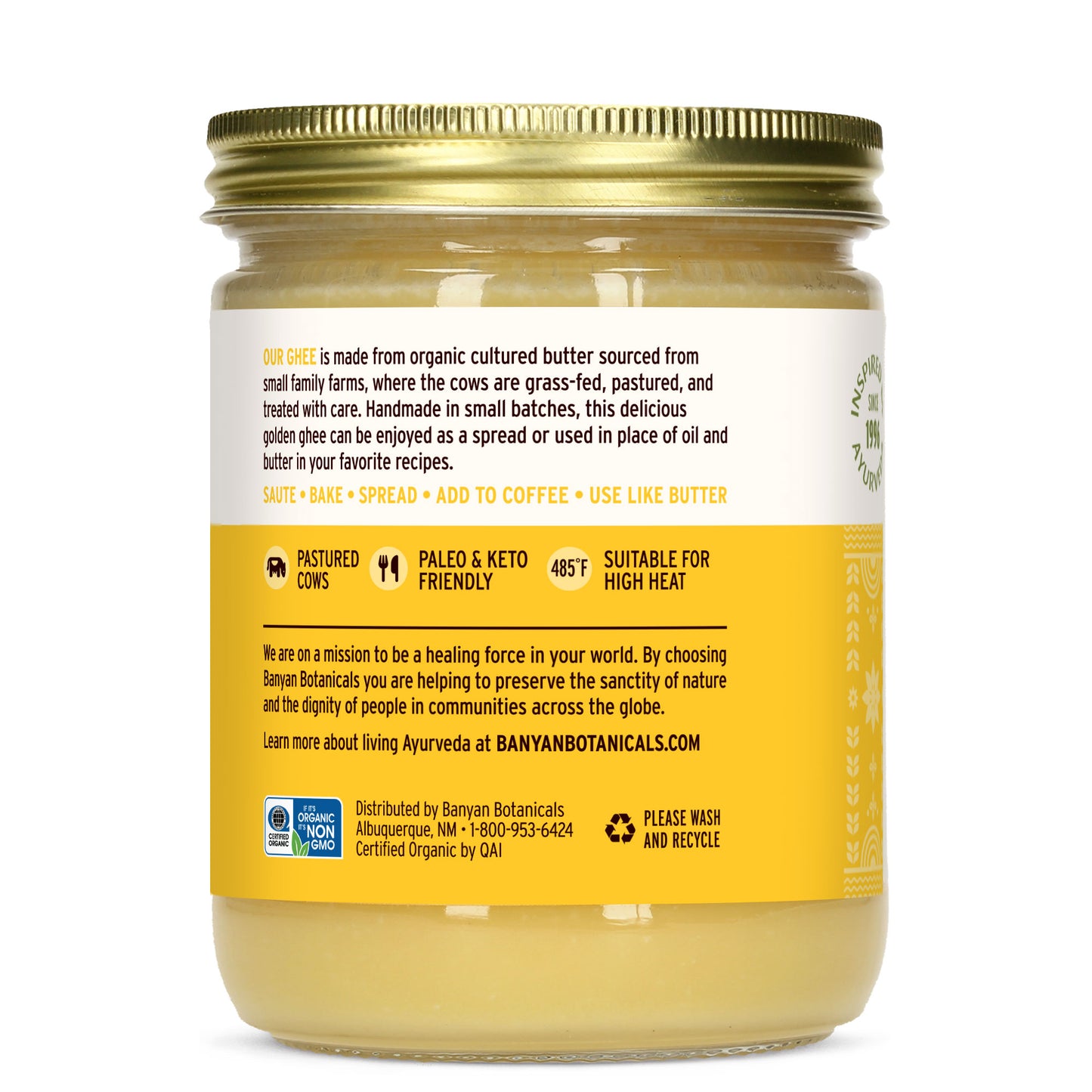

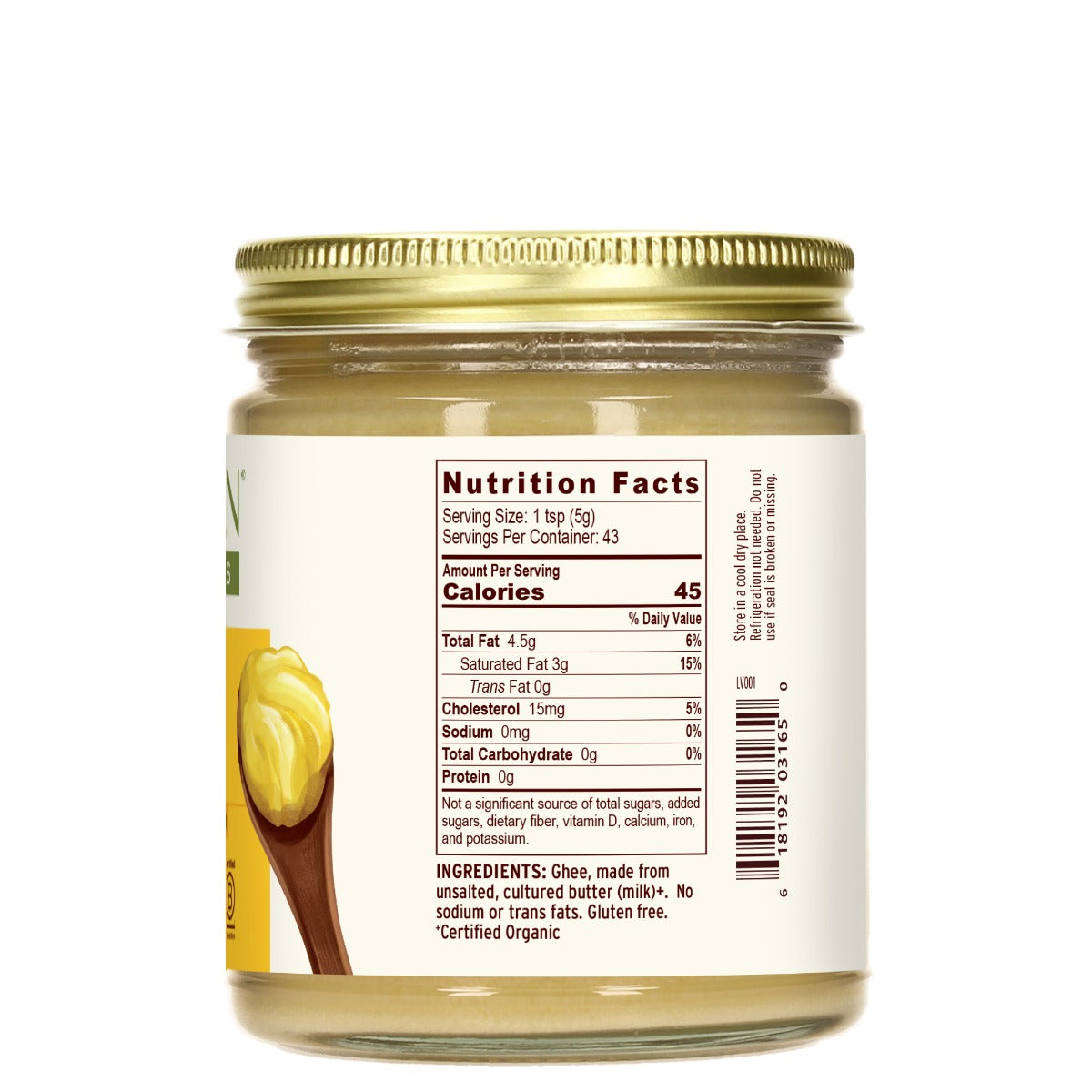
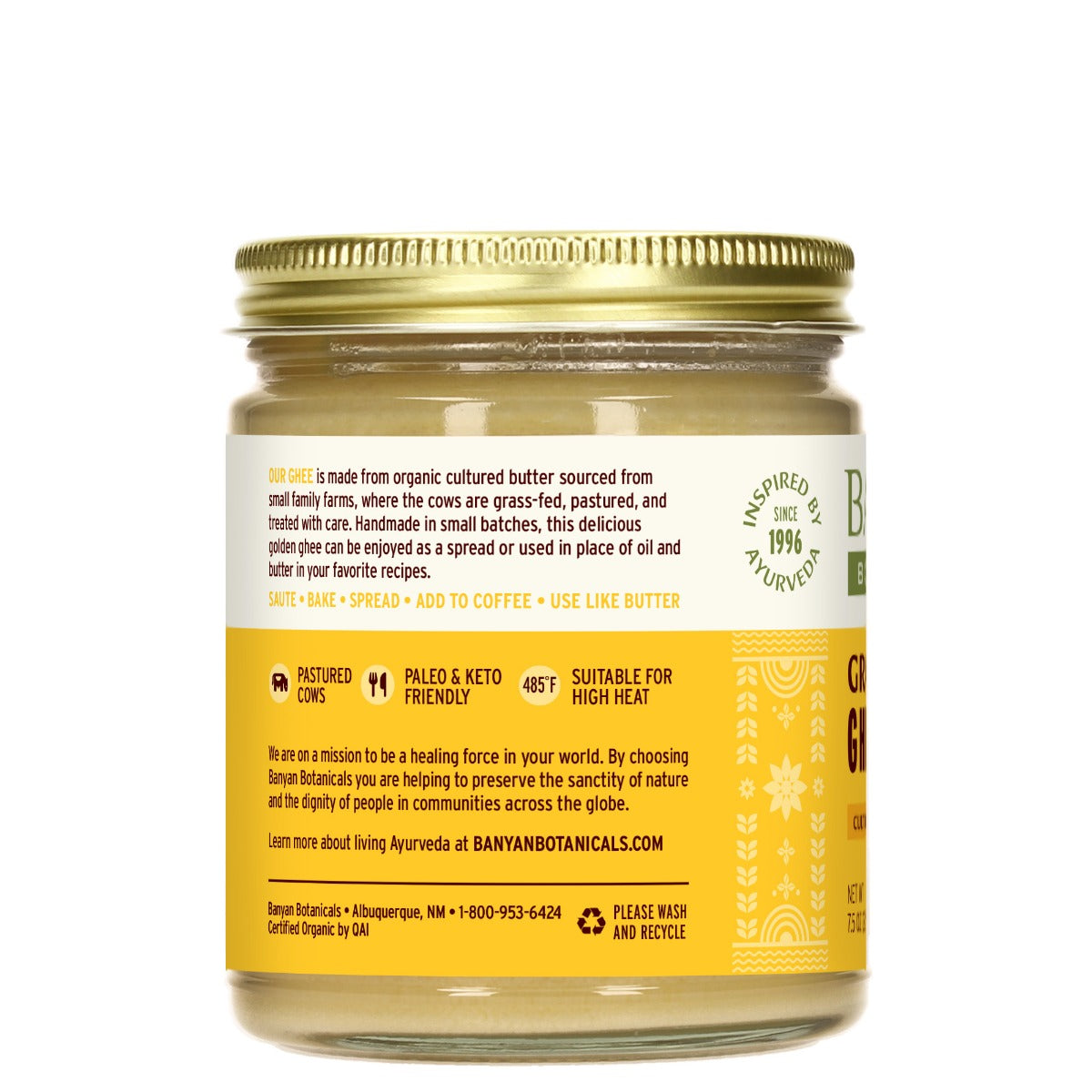
- "This is hands-down the best store-bought ghee I have ever used that is closest in aroma and quality to homemade ghee." —Angela S.
- "I don’t know what they’re feeding the cows or if this ghee is blessed by the gods, but it is seriously magical." —Melissa B.
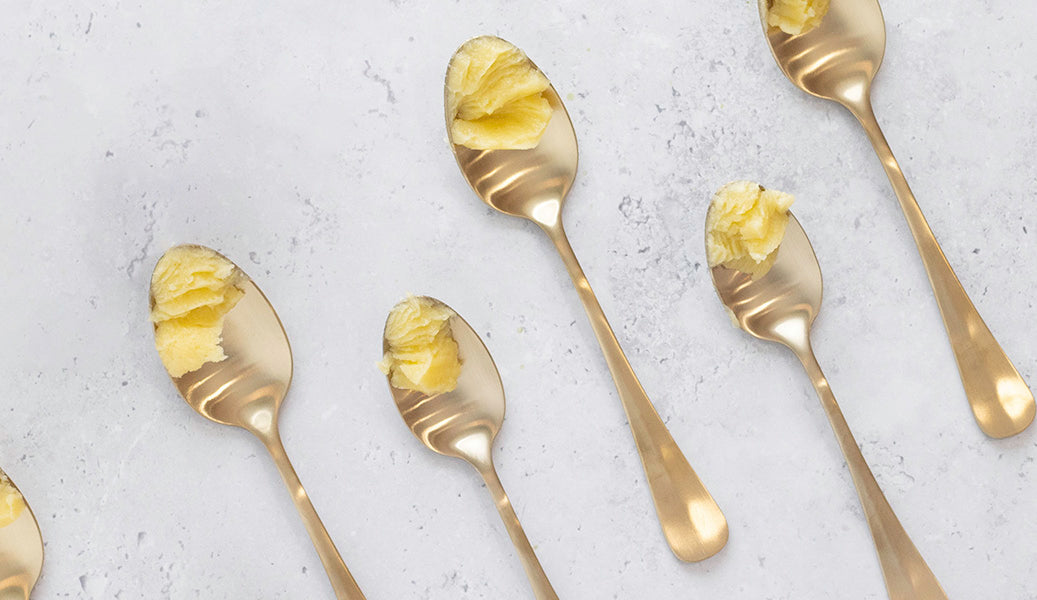
WHAT IS GHEE?
Ghee is a beautiful golden-yellow substance made by removing the impurities from butter. Also known as clarified butter or anhydrous milk fat, ghee has been used for thousands of years in Ayurveda for cooking and religious ceremonies, as well as therapeutically, both internally and externally.

-

Cruelty Free
-

Gluten Free
-

Non Gmo
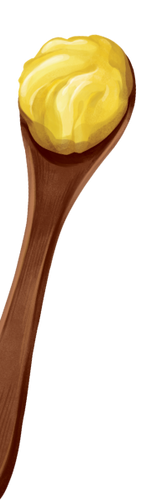
HEALTHY, HAPPY COWS
To receive the most extensive benefits of ghee, we believe it is of utmost importance to begin with butter that comes from healthy, thriving cows that are treated with care and respect. That's why Banyan's ghee is made from the milk of organic, grass-fed cows in Northern California, where they receive excellent treatment from the farmers who care for them.
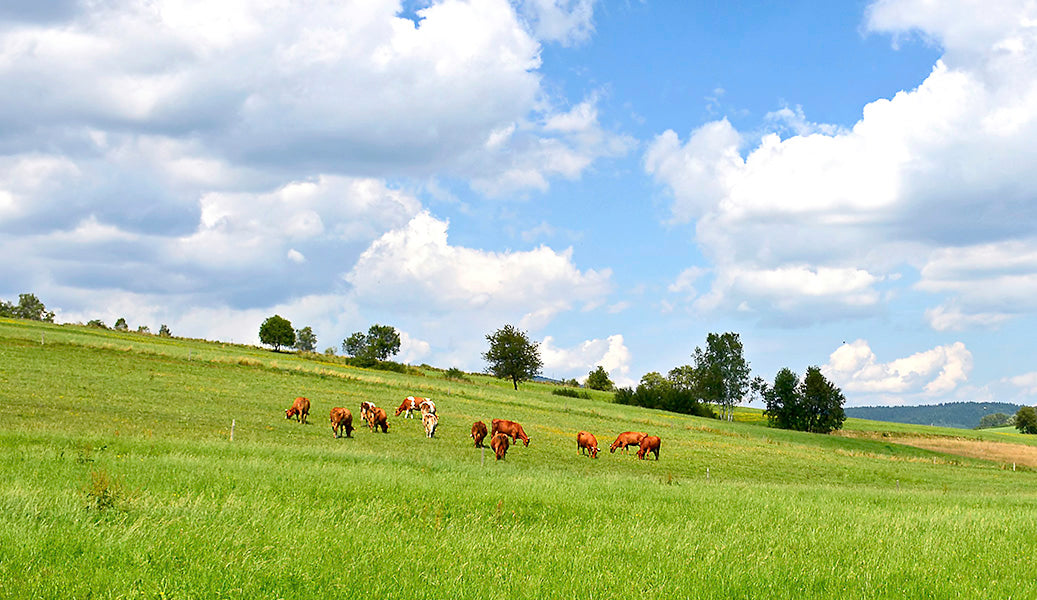
Organic Ghee FAQs
Our ghees are made in-house in small batches and are organic, sustainably sourced, and fairly traded.
- What gives ghee its golden color?
- What does Banyan's ghee smell like?
- What is the culturing process for the butter used to make this ghee?
- What is the benefit of using cultured butter to make the ghee?
- Why does the texture vary?
- The texture of my ghee is liquid or semi-liquid. How do I make my ghee solid and creamy?
- Do I need to refrigerate ghee?
- How do I know if ghee has gone bad?
1. What gives ghee its golden color?
The rich golden yellow color of ghee comes from a compound called beta-carotene. This carotenoid pigment comes from the cows' diet, which consists primarily of grass, dried grass, grains, and cereals. This golden color can vary depending on seasonal changes and the abundance of lush green grass that the cows graze upon.Â
2. What does Banyan's ghee smell like?
Our original ghee has a mild, sweet, and slightly nutty aroma, which comes from the cultured butter we use.
3. What is the culturing process for the butter used to make this ghee?
In traditional Ayurveda, the first step for making ghee starts with a process called “culturing.” Bacterial cultures are added to cow's milk and churned to make butter cream. The butter is then cooked until all the water is removed to form clarified butter, or ghee.
4. What is the benefit of using cultured butter to make the ghee?
Cultured butter is considered to be easier to digest and more balancing to all three doshas, including kapha. It also gives the ghee a unique nutty flavor.
Ghee contains many fatty acids that have different melting points, which can make the texture vary. This is caused by the melting and crystallization of the fats as the temperature and conditions change during production, storage, or transit. While this can change the texture, it does not impact the taste, quality, and shelf life of the ghee.
6. The texture of my ghee is liquid or semi-liquid. How do I make my ghee solid and creamy?
You have two options:
Simply place the ghee jar in a hot water bath for about 5·10 minutes until you notice the ghee turn completely liquid, then remove and let it cool. This may seem counterintuitive if it's already in a liquid or semi-liquid state, but it's the cooling process that matters!
Another option is to refrigerate the ghee jar overnight or leave the jar on the counter for the night. If you choose to leave it on the counter, you may notice a granulated texture. If you don't want this, we suggest refrigerating.
7. Do I need to refrigerate ghee?
While you can refrigerate ghee, it can also be stored in your cupboard. Keep it cool, out of sunlight, and free of any water or contaminants.
8. How do I know if ghee has gone bad?
The smell and color will let you know. It will smell rancid or sour. Original, unspiced ghee will turn white, and both the original and spiced ghee will form black spots on the top layer.Â

-
Sustainably Sourced
Environmentally responsible practices support the long term well-being of the plants and ecosystems we source from.
-
Certified Organic
Organic herbs are grown with the use of renewable resources, contributing to both individual and planetary health.
-
Fairly Traded
Equitable supply chains ensure the social and economic well-being of our small farmers, producers, and suppliers.















